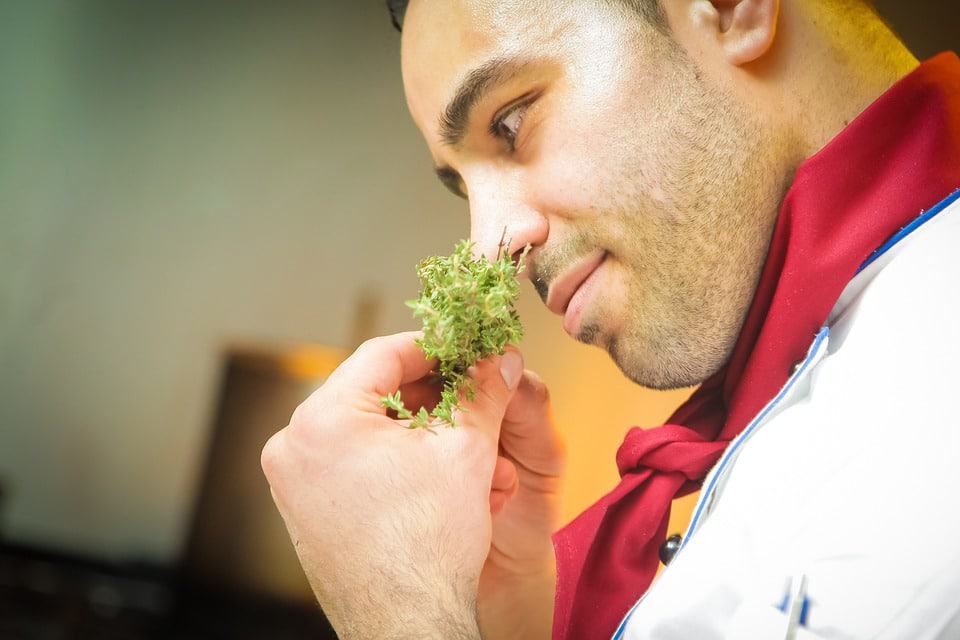How To Get My Smell And Taste Back – There are many reasons people lose their senses of taste and smell: allergies, flu, the common cold, sinusitis, and more recently, COVID-19. This has led us to try a range of potential remedies, from old wives’ tales to pharmaceutical interventions, to get our smell and taste back.
The good news is that researchers and medical experts have identified ways to help you regain these more quickly.
Understanding Loss of Taste and Smell

To know how to get your smell and taste back, it’s helpful to understand why you lose them in the first place.
Taste and Smell are Linked
Your senses of smell and taste are closely linked.
The two combine “information” at the back of your throat. Taste buds are responsible for identifying the four primary tastes – sweet, salty, sour, and bitter. This information travels to the back of your throat, with the sense of smell then distinguishing the difference.
From here, the “data” moves to your olfactory receptor neurons (ORNs) at the top of your nose, high up in your nasal vault. These then transmit olfactory information to your brain which develops flavor perception.
The combination of information helps us distinguish complex flavors. So, you know you are eating a lemon as opposed to an orange – similar textures, different flavor parameters.
Congestion Explained
When you have a cold or suffer from allergies, your nose becomes “blocked.” This is when your nasal passages develop excessive amounts of mucus and become inflamed in response to the infection. Because the nerves responsible for detecting smell are situated deep inside your nasal passage, the blocked nose prevents the taste and smell from reaching these receptors.
Hence your loss of smell (called anosmia) and taste – because those nerves have disrupted information to send to your brain to identify what you are eating or smelling.
Reasons for Losing Taste and Smell
It’s important to first identify why you have lost part or all of your senses of taste and smell. This could affect the type of treatment that you need to help regain them.
A few of the most common causes of loss of smell and taste are:
- Common cold or flu
- Sinusitis
- Allergies
- Upper respiratory infections
- Smoking
- Excessive alcohol intake
- Aging
- Neurological conditions
- Nasal polyps
- Over-exposure to various chemicals
- Radiation therapy
- Head trauma
If your symptoms suggest something more serious than a cold, flu, or allergies, see your physician as soon as possible. This includes the potential that you may have COVID-19, as loss of taste and smell are often the first symptoms.
The Taste (and Smell) of Life After COVID-19
If you are one of the many who has fallen ill with COVID-19 and suffered the loss of your senses of taste and smell, you’ll know that it’s far more intense than typical nasal congestion.
This is because this particular loss of taste and smell is caused by the coronavirus attaching itself to the supporting nerves around the olfactory neurons. Olfactory nerves send signals to the olfactory bulb in the brain.Â
They attack and infect these sustentacular cells which become damaged and break down, leaving the olfactory neurons with no support and deprived of nutrients.
With the supporting cells compromised, the olfactory nerves can’t function. So your brain doesn’t receive the information it needs to tell you what you’re tasting or smelling.
96% Have a Full Recovery
The good news is that 96% of patients recover their senses of taste and smell within 12 months, according to a study conducted by the University Hospitals of Strasbourg. Another study conducted by the Journal of Internal Medicine showed that 95% of patients regain these senses within six months. The sustentacular cells heal, and the full senses of smell and taste return.
For the few that have longer-term effects, there are ways to “retrain” your olfactory senses.
Stimulating Your Senses
Let’s start with giving your senses of smell and taste a little motivation if you’re recovering from COVID-19.
Start by regularly smelling foods or ingredients readily available in your home – ones that you generally enjoy the aroma of. Some good ones to start with include coffee, vanilla, lemon or other citrus fruits, garlic, mint, cloves, eucalyptus, coconut, and perfumes or colognes.
Other aromatic foods such as burnt oranges and raw onions are also a good trigger.
Repetition Triggers Memory
Seeing, feeling, and tasting these items while smelling them helps to “remind” your brain of the association. The strong-smelling stimuli of some of the ingredients may also encourage a physical reaction – like menthol making your eyes water. These all play a part in helping to trigger your senses.
Another option is to buy a bottle of essential oils that you smell multiple times daily, or burn in a diffuser.
Staying sufficiently hydrated is important too. Your body is in fighting mode, trying to stave off the effects of the virus. Ensuring your immune system has sufficient water is a vital element in that fight.
Olfactory Retraining
For the 4% who still struggle with having no taste or smell a year down the line, a method in its preliminary research phases is olfactory retraining.
It’s completely safe and doesn’t require any medication or prescriptions. However, it does require consistency and repetition.
How Olfactory Retraining Works
Olfactory retraining is the process of employing your body’s neuroplasticity to create new neural pathways. This means that you’re training your taste, smell, and brain, through repetitive actions, to associate foods and aromas in a new way.
The process involves repeatedly and deliberately sniffing a set of aromas. The recommended starting set includes lemon, rose, cloves, and eucalyptus. You start with one ingredient, sniffing it for 20 seconds while looking at it and consciously acknowledging that it is, for example, a lemon. Then you move on to the next ingredient.
This process should be repeated twice a day for at least three months. Then consider moving to the next set of ingredients.
Helpful Home Treatments for Common Congestion
For allergies and the common cold, these home treatments are effective and can be done at home without a prescription.
Lemon, Honey, and Ginger Tea
Add the juice of half a lemon, a teaspoon of freshly grated ginger, and a teaspoon or two of honey to hot water. Stir and drink hot. The citrusy lemon and strong ginger will help to clear out your sinuses.
Peppermint Tea
Boil a handful of peppermint leaves in a cup of water. Allow it to cool a little, then strain out the leaves. Add honey if you like, then drink it immediately. The primary constituent of peppermint is menthol, which is anti-inflammatory and antimicrobial.
Use a humidifier or take a hot shower
The moisture from a humidifier or the steam that comes from a hot shower helps to soothe the inflammation of your mucus membranes. This allows them to drain mucus more efficiently, bringing some relief to your congestion.
Eucalyptus oil
Eucalyptus oil is an antibacterial agent and has anti-inflammatory, pain-relieving, and relaxing properties. Pour a few drops into a bowl of steaming water or diffuser and inhale it to help relieve nasal congestion.
Rinsing With a Saltwater Solution
Flushing out your nose with a saltwater solution helps to remove thick or dried mucus from your nasal passages. It also helps to improve the function of the cilia that keep your sinuses clear, preventing infection. It keeps your mucus membranes moist, preventing further infection.
Method
- Boil the water and leave it to cool to room temperature.
- Mix a teaspoon of salt and a teaspoon of baking soda into the water.
- Standing over a sink, use a large syringe (no needle) and squeeze bottle or nasal cleansing pot to gently squeeze the water into one nostril then the other.
- Aim towards the back of your head, not the top.
- The solution should go through your nose and out your mouth or the other nostril.
- Blow your nose gently after the wash (unless your doctor has recommended otherwise).
- Repeat several times a day.
- Make a fresh solution every day.
Over-the-Counter (OTC) Solutions
If you’re uncomfortable going the home-medication route, pharmacies offer pre-packaged saline solutions with instructions on how to prepare and use the solution.
Several OTC medications can help ease congestion, and bring relief from the discomfort of a blocked nose. Anti-allergy medications, decongestants, and even steroid-based medications can ease the symptoms that make you feel unwell while your body is fighting your cold or flu.
Before taking any new medication, consult the pharmacist if you have a general cold, or your physician if you feel it’s more serious. Targeted medication is always the safest route to go.
Consult your doctor
If you’re feeling unwell and lose your senses of smell and taste, visit your physician or a COVID-19 testing center as soon as possible. These first symptoms of this variant of the coronavirus can get you diagnosed earlier rather than later, and safely isolated at home so you can focus on getting well, and keeping your family, friends, and work colleagues safe.
Be Patient and Stay Positive
Getting back your sense of taste and smell won’t happen overnight. Depending on how severe your congestion is and whether you’re recovering from the loss due to COVID-19, it could range from a week or two to many months.
While the process can be frustrating, being patient and staying positive are your key to getting through it successfully, and fully regaining your senses.







